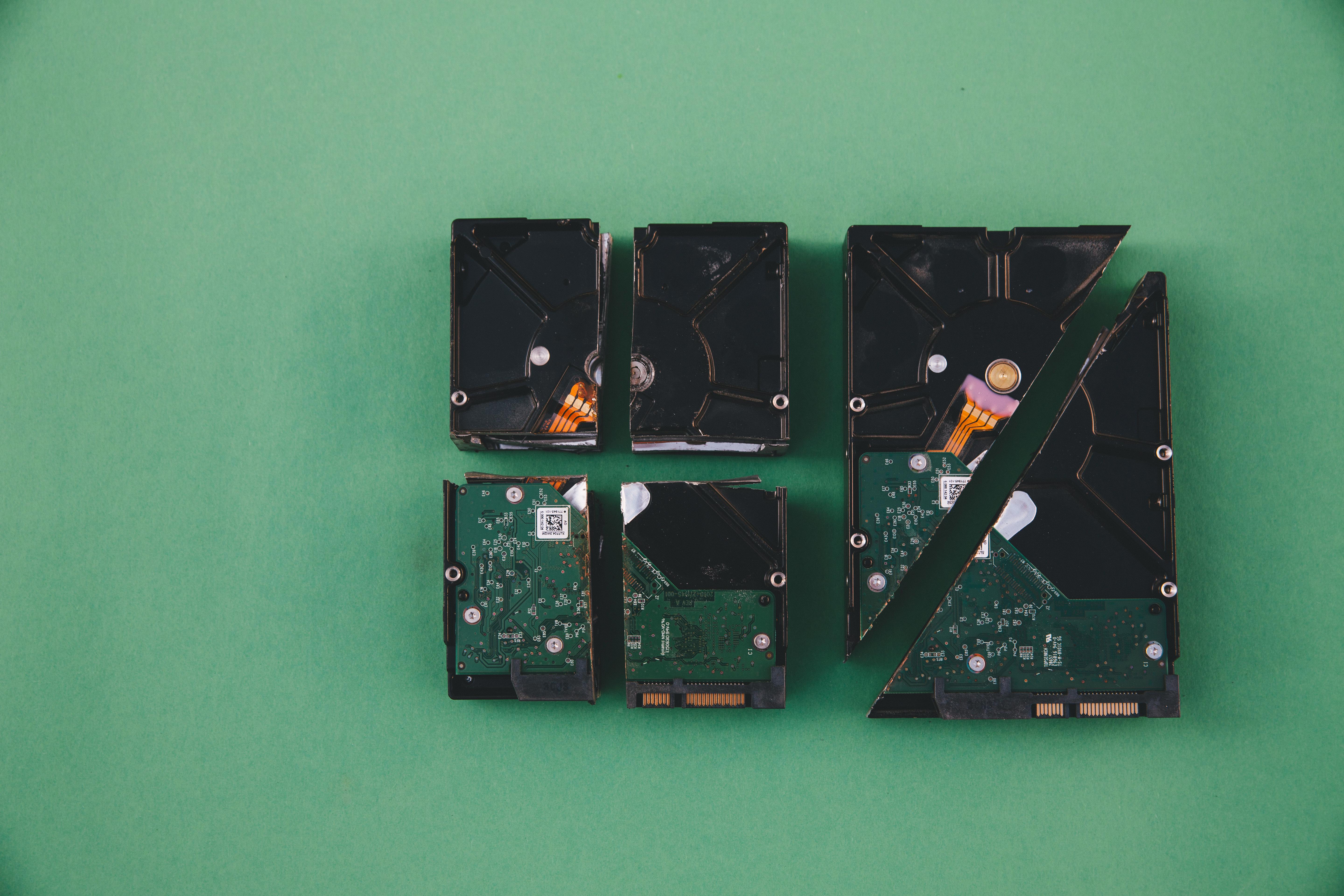Are you tired of battling Windows 11 disk usage spikes that slow down your computer to a crawl? If so, you’re not alone! Many users experience frustratingly high disk usage, which can lead to sluggish performance and unresponsive applications. In this article, we’ll explore effective solutions to resolve Windows 11 disk usage spikes and help you unlock faster performance for your device.
Understanding the causes of these pesky spikes is crucial. Is it background processes, system updates, or perhaps even malware? By diving into common culprits, we will arm you with the knowledge to tackle these challenges head-on. Plus, we’ll share quick fixes and advanced techniques that can significantly reduce disk usage and enhance your overall computing experience. Imagine a world where your computer operates smoothly, allowing you to multitask effortlessly without worrying about unnecessary slowdowns. Sounds enticing, right?
So, if you’re ready to solve Windows 11 disk usage spikes once and for all, keep reading! Whether you’re a seasoned techie or a casual user, our comprehensive guide will provide you with actionable insights and tips. Say goodbye to the frustration of high disk usage and hello to a faster, more efficient Windows 11 experience! Don’t let disk issues hold you back—discover how to reclaim your system’s speed and performance today!
Top 7 Proven Methods to Fix Disk Usage Spikes in Windows 11: Boost Your PC’s Performance Today!

If you ever notice your Windows 11 PC running slow or lagging, it could be because of disk usage spikes. These spikes can cause frustration and slow down your daily tasks. In New York, many users face this issue, and it’s important to know how to fix them. Here are the top 7 proven methods to fix disk usage spikes in Windows 11. These tips can help you boost your PC’s performance today!
1. Check for Windows Updates
Sometimes, outdated software can cause issues. Regularly checking for updates can help. To do this, go to Settings, then click on “Windows Update.” Install any available updates, as they often include performance improvements and bug fixes that can solve these disk usage problems.
2. Disable Superfetch (SysMain)
Superfetch, also known as SysMain, is a Windows service that preloads frequently used apps into RAM to speed up loading times. However, it can also cause high disk usage. You can disable it by following these steps:
- Press Windows + R to open the Run dialog.
- Type “services.msc” and hit Enter.
- Find “SysMain” in the list, right-click it, and select “Properties.”
- Click “Stop” and change the Startup type to “Disabled.”
This might reduce your disk usage significantly.
3. Run Disk Cleanup
Over time, temporary files accumulate and can take up space on your disk. Running Disk Cleanup can free up some space. Here’s how you do it:
- Search for “Disk Cleanup” in the Start menu.
- Select the drive you want to clean.
- Check the boxes for the file types you want to delete, then click “OK.”
This clears unnecessary files which might be causing issues.
4. Check for Malware
Malware can cause abnormal disk activity. Run a full system scan with Windows Defender or any trusted third-party antivirus. Ensure your definitions are up-to-date to maximize detection of potential threats.
5. Change Virtual Memory Settings
Windows uses virtual memory as an extension of RAM. Sometimes, improper settings can lead to high disk usage. To adjust them:
- Right-click on “This PC” and select “Properties.”
- Click on “Advanced system settings.”
- In the Performance section, click “Settings.”
- Go to the Advanced tab, and click “Change” under Virtual Memory.
You can either let Windows manage it automatically or set a custom size.
6. Disable Windows Search Indexing
Windows Search indexing can also contribute to disk spikes. Disabling it can improve performance. To do that:
- Press Windows + R, type “services.msc,” and hit Enter.
- Find “Windows Search,” right-click it, and select “Properties.”
- Click “Stop” and set the Startup type to “Disabled.”
This helps reduce unnecessary disk activity.
7. Check Disk for Errors
Sometimes, disk errors can cause slow performance. You can check for errors by:
- Right-clicking on your drive in “This PC.”
- Selecting “Properties,” then click the “Tools” tab.
- Under Error checking, click “Check.”
This can help identify and fix issues affecting your disk’s performance.
By implementing these methods, you can resolve Windows 11 disk usage spikes effectively. Don’t let high disk activity slow you down! Regular maintenance and these simple fixes can keep your PC running smoothly. Remember, it’s always important to keep your system updated and free from clutter. With these strategies, you should be able to unlock faster performance and enjoy a more efficient computing experience.
Is Windows 11 Slowing You Down? Discover the Hidden Causes of Disk Usage Spikes and Quick Solutions!

Is Windows 11 Slowing You Down? Discover the Hidden Causes of Disk Usage Spikes and Quick Solutions!
If you recently upgraded to Windows 11, you might notice your system is not as snappy as you expected. Disk usage spikes can be a common issue, causing frustration and slowdowns. Understanding what causes these spikes is essential for improving your PC’s performance. Let’s take a look at some of the hidden reasons behind these spikes and explore quick solutions to resolve Windows 11 disk usage problems.
Common Causes of Disk Usage Spikes
There are several reasons why your disk usage can suddenly shoot up. Here are some of the most common culprits:
- Windows Update: The operating system often runs updates in the background, which can consume significant disk resources.
- Antivirus Scans: Your antivirus software might be running scans that hog disk usage, particularly if it’s set to scan system files regularly.
- Superfetch/SysMain: This service preloads frequently used applications into memory, but it can sometimes cause excessive disk activity.
- Third-Party Applications: Some applications can be poorly optimized, leading to high disk usage.
- Corrupted Files: Damaged files can also lead to disk usage spikes as the system attempts to read or write to them.
Quick Solutions to Disk Usage Spikes
Addressing these issues can be simpler than you think. Here are some quick solutions that can help you unlock faster performance.
-
Disable Windows Update Temporarily:
- Go to Settings > Update & Security > Windows Update.
- Pause updates for a week or so. This can give your disk some breathing room.
-
Change Antivirus Settings:
- Open your antivirus settings and check for options like scheduled scans or real-time protection.
- Try to change the scan frequency or exclude certain files or folders to minimize disk usage.
-
Disable Superfetch/SysMain:
- Press Windows + R, type “services.msc”, and hit Enter.
- Find Superfetch or SysMain, right-click, and select “Stop”. This can reduce unnecessary disk activity.
-
Uninstall Unused Applications:
- Go to Settings > Apps > Apps & features.
- Review the list and uninstall apps you no longer use, which can free up system resources.
-
Run Disk Cleanup:
- Type “Disk Cleanup” in the search bar, select your drive, and clean up system files.
- This can help remove temporary files and free up space.
Monitoring Disk Usage
To keep track of disk usage, you can utilize the built-in Task Manager. Just press Ctrl + Shift + Esc to open Task Manager, and click on the “Performance” tab. This will show you real-time disk usage.
Alternatively, using third-party tools can help provide more insights into which applications are consuming disk resources. Some popular tools include:
- Process Explorer: A powerful tool to monitor processes and their disk usage.
- CrystalDiskInfo: This can help you assess the health of your hard drive.
Final Thoughts
Experiencing slow performance on Windows 11 due to disk usage spikes can be frustrating, but knowing the hidden causes and applying these quick solutions can significantly enhance your system’s performance. By managing updates, optimizing your antivirus, and regularly cleaning your system, you can enjoy a smoother experience. Don’t let disk issues hold you back from getting the most out of your Windows 11 setup!
Unlock Faster Performance: 5 Essential Tips to Resolve Windows 11 Disk Usage Spikes Instantly

Are you tired of your Windows 11 system slowing down due to disk usage spikes? You’re not alone. Many users in New York and beyond encounter this problem, which can lead to frustration and decreased productivity. Thankfully, there are ways to resolve Windows 11 disk usage spikes and unlock faster performance. Here are five essential tips to help you tackle this.
Identify Resource-Heavy Applications
One of the first things you should do is to check which applications are taking up the most disk space. Windows 11 has a built-in task manager that makes this easy. You can right-click on the taskbar, select “Task Manager,” and then navigate to the “Processes” tab. Look for applications that are using over 50% of the disk. Sometimes, it could be a background process or program that you didn’t even realize was running.
- Common resource-heavy apps include:
- Microsoft Edge
- Windows Search
- Windows Update
- Third-party antivirus software
If you find an application that you rarely use, it may be worth uninstalling or disabling it.
Disable Windows Search Indexing
Windows Search can be helpful but it’s notorious for causing disk usage spikes. By disabling this feature, you can see a significant drop in disk usage. To do this, type “services.msc” in the Start menu, and find “Windows Search.” Right-click it and select “Properties.” Change the startup type to “Disabled.” This might make searches slower, but it could greatly improve overall performance.
Adjust Virtual Memory Settings
Virtual memory is a feature that allows your computer to use hard disk space as additional RAM. However, if it’s set incorrectly, it can lead to disk usage spikes. To adjust this setting, go to “System Properties,” then “Advanced system settings.” Under the “Performance” section, click “Settings,” then navigate to the “Advanced” tab. Here, you can adjust the virtual memory settings and potentially see improvements.
Disable Superfetch and SysMain
Superfetch, now known as SysMain, is intended to speed up application launching but can often lead to increased disk usage. Disabling it can free up resources. To do this, go to “Services” again (as mentioned earlier), locate “SysMain,” and disable it in the same way you did for Windows Search. This could lead to faster performance for many users.
Regularly Check for Malware
Sometimes, high disk usage is a sign of malware on your system. It’s important to run a full system scan frequently. Use Windows Defender or another reputable antivirus software to perform this check. Malware can often run in the background, consuming your system’s resources without you knowing it.
- Signs of malware could include:
- Unusual disk activity
- Slow performance
- Unexpected pop-ups
By regularly checking for and removing malware, you not only resolve Windows 11 disk usage spikes but also maintain the overall health of your system.
Implementing these strategies can significantly improve your computer’s performance and help you avoid frustrating disk usage spikes. With just a few adjustments, you could enjoy a smoother, faster computing experience in Windows 11. If you continue to face issues, consider reaching out to a tech professional or exploring further optimizations. By being proactive, you can ensure your system operates at its best!
The Ultimate Guide to Diagnosing and Fixing Disk Usage Issues in Windows 11: What Every User Must Know

Windows 11 is a powerful operating system, but sometimes it struggles with disk usage issues. For many users, it’s a real headache when the disk usage spikes unexpectedly. In this ultimate guide, we’ll explore how to diagnose and fix these disk usage issues, helping you unlock faster performance on your machine.
Understanding Disk Usage in Windows 11
Disk usage refers to how much of your hard drive is being utilized at any given time. When your disk usage hits 100%, your system may slow down, applications might lag, and you might experience longer boot times. It’s crucial for users to identify the culprits behind these spikes.
Common Causes of Disk Usage Spikes
There are several common factors that can lead to high disk usage in Windows 11. Here’s a list of some frequent offenders:
- Windows Update Service: Sometimes, Windows Update can get stuck, causing high disk activity.
- Superfetch (SysMain): This service helps speed up app launching but can also cause disk usage to spike.
- Antivirus Scans: Security software can be resource-intensive, especially during a full system scan.
- Disk Fragmentation: Though less of an issue with SSDs, fragmentation can still affect performance on traditional HDDs.
- Background Applications: Many apps run in the background and can consume disk resources without you knowing.
Diagnosing Disk Usage Problems
To effectively resolve Windows 11 disk usage spikes, you need to first diagnose the root cause. Here’s how you can do that:
- Task Manager: Open Task Manager by pressing Ctrl + Shift + Esc. Click on the “Processes” tab and look for processes that are consuming high disk usage.
- Resource Monitor: Access Resource Monitor via Task Manager for a more detailed look. Go to the Disk tab to see which processes are using the most resources.
- Windows Performance Monitor: This tool can provide insights over time, allowing you to track disk usage patterns.
Fixing Disk Usage Issues
Now that you’ve diagnosed the issues, it’s time to address them. Here are some practical steps you can take:
- Disable Superfetch: To turn off Superfetch, press Windows + R, type “services.msc,” find SysMain, and set it to Disabled.
- Check for Windows Updates: Make sure your system is updated. Sometimes, pending updates can cause high usage.
- Disable Windows Search: If Windows Search is running in the background, it can consume resources. You can stop this service in the same way as Superfetch.
- Limit Background Applications: Go to Settings > Privacy > Background apps, and limit the apps that can run in the background.
- Run Disk Cleanup: Use the built-in Disk Cleanup tool to remove unnecessary files that could be taking up space.
Performance Optimization Tips
To further enhance your system’s performance, consider these additional tips:
- Upgrade Your Hardware: If you’re using an HDD, upgrading to an SSD can result in significantly faster performance.
- Increase RAM: More RAM can help your system manage tasks more efficiently, reducing strain on the disk.
- Use a Third-Party Tool: Consider using tools like CCleaner or Disk Defragmenter to optimize disk usage.
Final Thoughts
Dealing with disk usage spikes in Windows 11 doesn’t have to be a daunting task. By understanding the causes, diagnosing the issues, and implementing the right solutions, you can restore your system to its optimal performance. Remember to keep an eye on your disk usage regularly, and take proactive steps to prevent future problems. With the right approach, you can enjoy a smoother, faster Windows experience.
Why Is Your Windows 11 Disk Usage at 100%? Explore 6 Common Triggers and How to Eliminate Them

Experiencing 100% disk usage on your Windows 11 computer can be a real headache. This issue can slow down your system, making it almost unusable. Many users in New York and elsewhere find themselves asking, “Why is my Windows 11 disk usage at 100%?” Understanding the common triggers behind this problem is crucial for restoring your device’s speed and performance. Here, we will explore six common reasons that could cause spikes in disk usage and how to effectively eliminate them.
Background Processes Overload
Windows 11 comes with a variety of background processes, and sometimes they can get out of hand. Programs like Windows Update, Superfetch (SysMain), or Windows Search can run excessively, hogging your disk space. To fix this, you can disable these services:
- Open the Run dialog by pressing
Windows + R. - Type
services.mscand hit Enter. - Find services like Superfetch and Windows Search, right-click and select “Properties.”
- Change the Startup type to “Disabled.”
Malware or Viruses
Malicious software can also be a culprit behind high disk usage. If you notice your computer slowing down, it might be time to run a thorough antivirus scan. Using a reliable antivirus software can help you detect and remove harmful programs.
Outdated Drivers
Outdated or incompatible drivers can cause Windows 11 to work harder than necessary, leading to increased disk usage. You can update your drivers by:
- Right-clicking the Start menu and selecting “Device Manager.”
- Expanding categories and looking for any devices with a yellow exclamation mark.
- Right-click on the device and select “Update driver.”
Windows Indexing Service
The Windows Indexing service is designed to make searching files quicker. However, if it’s constantly indexing, it can lead to 100% disk usage. You can adjust the settings:
- Go to Control Panel and select “Indexing Options.”
- Click on “Modify” and uncheck locations that you don’t need indexed.
Virtual Memory Settings
Sometimes, your virtual memory settings may need adjustment. If your system is low on RAM, Windows uses disk space as virtual memory, which can spike usage. Here’s how to check and modify virtual memory:
- Right-click on “This PC” and select “Properties.”
- Click on “Advanced system settings” and then on the “Advanced” tab.
- Under Performance, click “Settings,” go to the “Advanced” tab, and click “Change” under Virtual Memory.
Disk Fragmentation
Even though Windows 11 automatically defragments SSDs, traditional hard drives could still be affected by fragmentation. Regular defragmentation helps improve performance. You can defrag your disk by:
- Typing “Defragment and Optimize Drives” in the search bar.
- Selecting the drive and clicking “Optimize.”
Final Thoughts
Understanding why your Windows 11 disk usage spikes to 100% is essential for maintaining optimal performance. By addressing these common triggers such as background processes, malware, outdated drivers, indexing settings, virtual memory configurations, and disk fragmentation, you can unlock faster performance and a smoother experience on your device. If you keep these solutions in mind, you can effectively solve Windows 11 disk usage spikes and enjoy a more responsive computing experience. Don’t let disk usage issues slow you down; take action today!
Conclusion
In conclusion, addressing disk usage spikes in Windows 11 is essential for maintaining optimal system performance. Throughout this article, we explored several key strategies, including disabling unnecessary startup programs, adjusting virtual memory settings, and using the built-in Task Manager to identify resource-hungry applications. Additionally, we discussed the importance of keeping your system updated and performing regular disk cleanups to free up space. By implementing these solutions, you can significantly reduce disk usage and enhance your overall computing experience. Remember that a well-maintained system not only improves speed but also prolongs the lifespan of your hardware. If you continue to experience issues, consider seeking professional help or exploring advanced solutions. Take action today to regain control over your disk usage and enjoy a smoother, more efficient Windows 11 experience.

